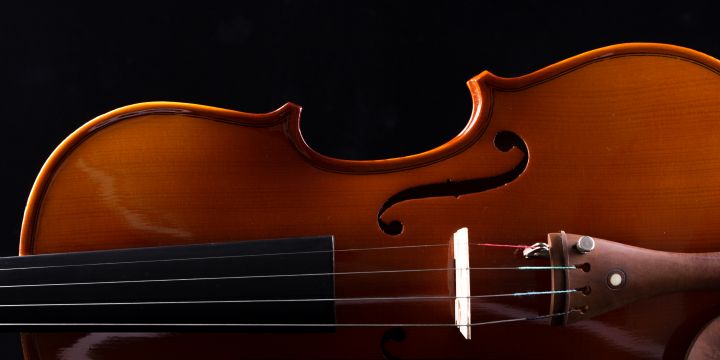When a violin string breaks, it can be a frustrating experience for any musician. One of the most immediate signs of a broken string is the sudden loss of tension. A player may notice that the instrument feels different under their fingers, as the string no longer vibrates in harmony with the others.
Additionally, the sound produced by the violin may become noticeably muted or even non-existent when the bow is drawn across the broken string. This lack of resonance can be disheartening, especially during a performance or practice session. Another telltale sign of a broken string is visual.
Musicians should regularly inspect their strings for any signs of wear and tear, such as fraying or discoloration. A broken string may also exhibit a clean break, which can be easily spotted upon close examination. In some cases, the string may not break completely but could develop a significant kink or twist that affects its ability to produce sound.
Recognizing these signs early can help prevent further damage to the instrument and ensure that the musician can return to playing as soon as possible.
Key Takeaways
- Signs of a Broken String: Look for fraying, unraveling, or a sudden change in pitch.
- Impact on Sound Quality: A broken string can cause a loss of tone and resonance.
- Frequency of String Replacement: Strings should be replaced every 6-12 months, depending on usage.
- Types of Violin Strings: Choose from steel, synthetic, or gut strings, each with unique qualities.
- How to Replace a Broken String: Carefully remove the old string and securely attach the new one, tuning it to the correct pitch.
- Professional Assistance: Seek the help of a professional luthier for complex string replacements or adjustments.
- Preventing String Breakage: Avoid sudden temperature changes and excessive tension on the strings.
- Importance of Regular Maintenance: Regular cleaning, tuning, and inspection can prevent string breakage and maintain sound quality.
Impact on Sound Quality
The quality of sound produced by a violin is intricately tied to the condition of its strings. When a string breaks, it disrupts the delicate balance of tension and vibration that is essential for producing a rich, full tone. The remaining strings may struggle to compensate for the loss, resulting in an uneven sound that lacks depth and clarity.
This imbalance can be particularly noticeable in ensemble settings, where every note must blend seamlessly with others to create a harmonious performance. Moreover, a broken string can lead to an overall deterioration in the instrument’s tonal quality. The violin relies on the interaction between its strings and body to amplify sound, and any disruption in this system can lead to diminished resonance.
Musicians may find themselves grappling with a lack of projection, making it difficult to be heard in larger venues or during group performances. Therefore, addressing a broken string promptly is crucial not only for maintaining sound quality but also for preserving the integrity of the instrument itself.
Frequency of String Replacement
The frequency with which violin strings need to be replaced can vary significantly based on several factors, including playing style, frequency of use, and environmental conditions. For professional musicians who perform regularly, it is common to replace strings every few weeks or even after every performance. This routine ensures that they maintain optimal sound quality and responsiveness from their instrument.
In contrast, amateur players or those who practice less frequently may find that their strings last several months before needing replacement. Environmental factors also play a significant role in string longevity. Humidity and temperature fluctuations can cause strings to wear out more quickly, as they may expand and contract with changing conditions.
Additionally, the type of music being played can influence how often strings need to be changed; more aggressive playing styles may lead to faster wear and tear. Ultimately, musicians should develop a keen awareness of their instrument’s needs and establish a replacement schedule that aligns with their playing habits and environmental conditions.
Types of Violin Strings
| String Type | Material | Tone | Durability |
|---|---|---|---|
| Steel | Steel | Bright | High |
| Synthetic Core | Synthetic materials | Warm | Medium |
| Gut | Sheep intestine | Rich | Low |
Violin strings come in various types, each offering unique characteristics that cater to different playing styles and preferences. The most common materials used for violin strings include gut, steel, and synthetic options. Gut strings are traditionally favored for their warm, rich tone and complex overtones, making them popular among classical musicians.
However, they are also more susceptible to changes in humidity and temperature, which can affect their tuning stability. Steel strings, on the other hand, are known for their bright sound and excellent projection. They are less affected by environmental changes and tend to stay in tune longer than gut strings.
This makes them a popular choice for contemporary players and those who perform in diverse settings. Synthetic strings aim to combine the best qualities of both gut and steel, offering warmth and stability while being more durable than traditional gut options. Musicians often experiment with different types of strings to find the perfect match for their instrument and playing style.
How to Replace a Broken String
Replacing a broken violin string is a straightforward process that any musician can learn with practice. The first step involves carefully removing the broken string from the instrument. This typically requires loosening the tuning peg and unwinding the string from both the peg and the tailpiece.
Musicians should take care not to damage any other components during this process, as violins are delicate instruments. Once the broken string has been removed, it is time to install the new one. The musician should first thread the new string through the tailpiece and then guide it up to the appropriate tuning peg.
After securing it in place, they will need to wind the string around the peg while ensuring it maintains proper tension. It is essential to tune the new string gradually, allowing it to stretch slightly before reaching its final pitch. This process not only ensures that the string remains stable but also helps maintain overall tuning accuracy across all strings.
Professional Assistance
While many musicians feel comfortable replacing their own strings, there are times when seeking professional assistance is advisable. A luthier or violin technician possesses specialized knowledge and skills that can be invaluable when dealing with more complex issues related to string breakage or overall instrument maintenance. They can assess whether a broken string is indicative of underlying problems, such as improper bridge height or issues with the nut.
Additionally, professional technicians can provide guidance on selecting the right type of strings for an individual musician’s needs. With their expertise, they can recommend specific brands or materials that may enhance sound quality or playability based on a player’s style and preferences. For those who are unsure about their ability to replace strings correctly or who want to ensure their instrument is in optimal condition, consulting a professional can be a wise investment.
Preventing String Breakage
Preventing string breakage is an essential aspect of maintaining a violin’s performance and longevity. One effective strategy is to regularly inspect strings for signs of wear and tear, such as fraying or discoloration. By identifying potential issues early on, musicians can replace strings before they break during practice or performance sessions.
Additionally, players should be mindful of their playing technique; excessive force or improper bowing can contribute to premature wear on strings. Environmental factors also play a significant role in string durability. Musicians should store their violins in stable conditions, avoiding extreme temperatures or humidity levels that could weaken the strings over time.
Using a humidifier in dry environments or keeping the instrument in a protective case when not in use can help mitigate these risks. By taking proactive measures to care for their strings and instrument, musicians can significantly reduce the likelihood of unexpected breakage.
Importance of Regular Maintenance
Regular maintenance is crucial for ensuring that a violin remains in optimal playing condition over time. This includes not only monitoring and replacing strings but also checking other components such as the bridge, soundpost, and fingerboard for any signs of wear or damage. A well-maintained instrument will not only sound better but will also be more enjoyable to play, allowing musicians to focus on their artistry rather than technical issues.
Furthermore, regular maintenance helps preserve the value of the instrument itself. Violins are often significant investments, and neglecting proper care can lead to costly repairs down the line. By establishing a routine maintenance schedule that includes professional check-ups and adjustments as needed, musicians can ensure that their instruments continue to perform at their best while retaining their value over time.
Ultimately, investing time and effort into regular maintenance pays off in enhanced performance and longevity for both the instrument and its player.
If you’re interested in the world of music, you may also enjoy reading about the evolution of Taylor Swift’s sound in this article. Just like how a broken string can change the sound of a violin, Taylor Swift’s music has evolved over the years, showcasing her growth as an artist.
FAQs
What should I do if a string on my violin breaks?
If a string on your violin breaks, you should replace it with a new string of the same gauge and material. It’s important to tune the new string properly to ensure it matches the tension of the other strings.
How often do violin strings break?
The frequency of violin strings breaking can vary depending on factors such as the quality of the strings, how often the violin is played, and the playing style of the musician. Generally, violin strings can last for several months to a year before breaking.
Can I repair a broken violin string?
It is not recommended to repair a broken violin string. Once a string has broken, it is best to replace it with a new one to ensure the sound and playability of the instrument are not compromised.
What causes violin strings to break?
Violin strings can break due to a variety of reasons, including natural wear and tear, excessive tension, poor quality strings, or sudden changes in temperature and humidity. Playing with excessive force or using improper technique can also contribute to string breakage.
How can I prevent violin strings from breaking?
To prevent violin strings from breaking, it’s important to regularly inspect the strings for signs of wear and replace them as needed. Proper maintenance, including keeping the instrument in a stable environment and using correct playing techniques, can also help prevent string breakage.




